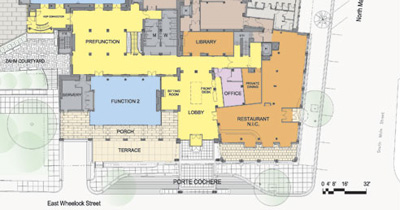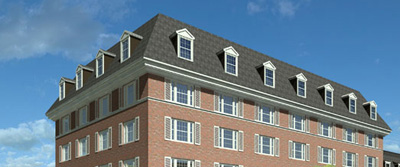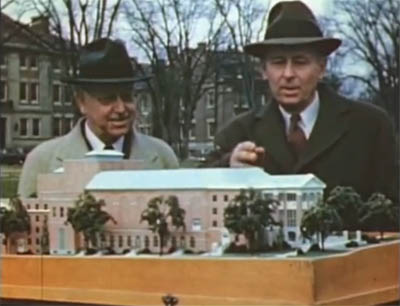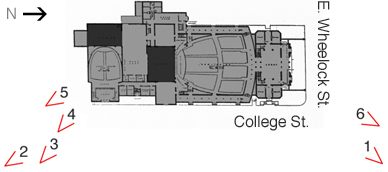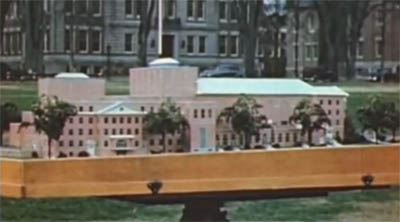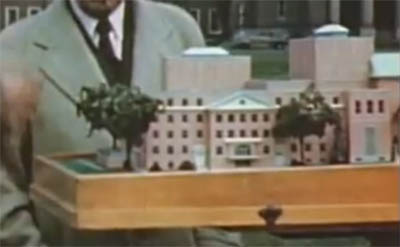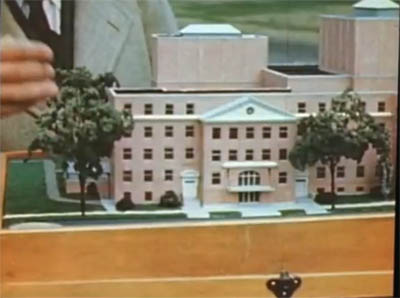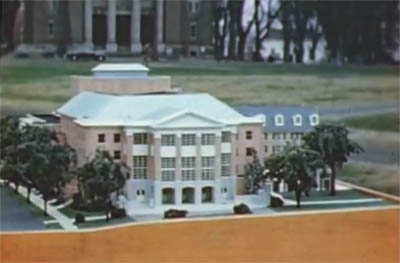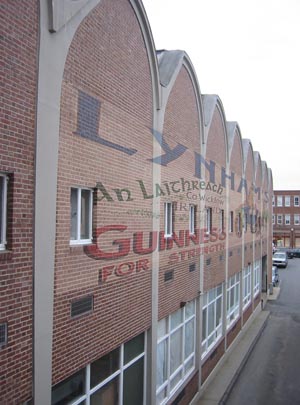Dartmouth is putting into effect that Centerbrook master plan noted here on the 4th.
The college took proposals from four firms and today announced the selection of Tod Williams Billie Tsien as the architects for the project (Office of Public Affairs Press Release, Times ArtsBeat).
The project will add museum space behind Wilson Hall, renovate Wilson itself, and turn Wilson’s great arched entrance into the main entrance for the whole Hood Museum complex.
It is difficult to emphasize too much the importance of Wilson’s arch. When Dartmouth published some of Robert Frost’s reminiscences about how he decided, in Wilson Library, to become a poet, it titled the pamphlet “Under That Arch” (American Memory).
Luckily the granite lintel bearing Wilson’s name is not very prominent and can be left in place. A new glass entrance pavilion projecting from the arch or attached to the front of the building will be able to display Hood’s name. The firm’s David Rubenstein Atrium at Lincoln Center (image) suggests one approach the firm could use.
During 1996 I spent about a month living in a Williams/Tsien building at U.Va. (Hereford College, 1992). I had some reservations about the overall project, a residential college on the back of a hill far from the center of campus (map). Because it is sited on a slope, it has trouble enclosing the sort of meaningful outdoor spaces you would expect: it is an arrangement of objects in a park. But I was impressed by the cool and serious Modernism of the individual buildings and their willingness to adopt a monumental scale when required (images from Tinmanic’s Flickr photostream and Wikipedia) . I liked the use of what I assume are local brick and slate on the exterior, and although the cinderblock interior was not ideal for a dormitory, it had a sternness that would be appropriate for a museum.
The firm’s work is serious and purposeful rather than frivolous, and in small doses it could create an exciting tension with Wilson’s Romanesque arches, the Hood’s Postmodern whimsy, and the Hop’s Modernist Expressionism.
—–
[Update 05.12.2013: Two links to Flash content on TWBTA site remove.]
[Update 07.07.2012: The Hood has a roundup of coverage of the announcement. Thanks to Alex Hanson for the quotes in the Valley News article (Hood-supplied pdf).]
